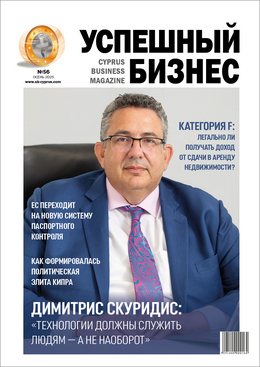Additional measures to help Cyprus health system become more efficient, impactful and in line with best practices from leading health systems across the world.
It has been over eight months now since Covid-19 first appeared in Cyprus, shaping a new reality and transforming the way we conduct our lives and businesses. Practical measures for our health system should help manage health crises and future Covid-19 waves in a more decisive, planned and controlled manner.
• Building surge capacity and ensuring better use of available hospital capacity • Re-designing the role of the retail pharmacy
• Using proven health technologies and analytics to identify and support Covid-19 patients and population at risk
• Enabling and reinforcing the role of the Ministry of Health’s public health team.
Covid-19 is a major challenge to our health system but also presents a unique opportunity for our policymakers to address structural or entrenched challenges and create the healthcare sector of tomorrow.
Looking beyond the hospital to the social determinants of health
The accelerated rise of chronic conditions and their heavy socioeconomic burden have been shifting the sector’s emphasis from treatment in the short term to prevention and management. It is imperative to recognise that disease prevention, management and well-being extend beyond the hospital: social determinants such as education, mental health, income, nutrition lifestyle, and housing all have a major impact on health outcomes. Accordingly, health should be defined in a broader term by including these social determinants in the care continuum and hence – in line with the first point above – the emphasis should be on increasing collaboration across all health stakeholders.
Various health systems have already moved into this direction and could serve as inspiration to newly formed systems such as the General Health System. For example, in the US many health organisations are adding nutritionists, behavioural health specialists, social workers, and community workers to their care teams alongside doctors. According to a recent PwC HRI study, extended care teams that include nutritionists and social and community health workers could save the system $1.2 million for every 10,000 patients served (PwC HRI, ROI for primary care: Building the dream team, Oct 2016).
Safeguarding the viability of GHS, protecting against system abuse and preserving clinical quality
One of the biggest challenges of the still-infant GHS is to continue to evolve its control mechanisms to: (a) detect & prevent abuse of the system and (b) preserve the quality of services provision so that to ensure viability of the system. To minimise abuse and errors, the Health Insurance Organisation (HIO) could invest in data analytics to be able to detect suspicious activity patterns including doctor referral patterns. Also, the organisation could carry out clinical audits and ‘mystery patient’ exercises aimed at GHS providers and implement harsh penalties for any doctors abusing the system. Acting now while the GHS is still in its infancy is important in order to encourage the right behaviours and develop the appropriate culture of respect to the system by all participants.
In order to preserve the quality of services provision, in line with international best practices, an independent organisation would need to set up quality standards, clinical protocols, KPIs, and follow an ongoing process of monitoring and measuring all GHS providers against these indicators. Measuring quality in the context of health is not an easy thing to do. Following the Donabedian model (also used by NICE UK), the measures used to assess and compare the quality of healthcare providers are classified as either:
1) a structure measure (the environment or setting, e.g. ratio of patients to doctors);
2) a process measure (the activity carried out, e.g. the share of people with diabetes who had their blood sugar tested and controlled), or
3) an outcome measure (the end result or impact, e.g. surgical mortality rates, readmissions, infections, etc.). For a comprehensive and detailed assessment of the quality of health services, all dimensions of care need to be evaluated.
Continue to invest in skills and infrastructure to strengthen and differentiate our health product and promote it in the global market
To be able to make our health product more competitive on an international stage and also serve the patients in the best possible way, our policymakers need to provide the right incentives to secure a steady supply of high-calibre skills and staff. For instance, in Cyprus we have a shortage of nurses - 5.2 per 1,000 people vs 8.4 in the EU, while the ratio of 1.5 nurses for every doctor was among the lowest in the EU (State of Health report on Cyprus, OECD, 2017). Enhancing the role of nurses, introducing specialisation and reimbursement levels which will be based on experience and academic qualifications, creating more nursing courses at local universities, offering access to quality training to nurses and linking it to the renewal of their nursing licence, introducing a consistent evaluation framework are all means of securing a steady supply of knowledge nurses.
Creating a strong brand for clinical quality and ensuring that Cyprus has a ready supply of highcalibre staff, alone are not enough to make our health product competitive. For Cyprus to become a competitive destination for medical tourism in relation to certain suitable specialties (e.g. rehabilitation, general surgery, bariatric, plastic surgery, etc.), the state should also take a leading role in putting in place the right enabling infrastructure. For instance, offering certain financial/tax incentives to foreign doctors, actively promoting the Cyprus health sector internationally, forming strategic partnerships with international medical concierge and tour-operator companies, investing in business relationships with targeted leading university hospitals, and subsidising flights to create better connectivity would all help strengthen our competitive position abroad.
Using technology to achieve financial efficiencies and provide better care
Virtual care solutions can help improve outcomes and reduce costs, expand access to services especially for remote populations, improve utilisation management and radically promote preventive and chronic disease management. Globally, consumers are starting to adopt virtual health – with 16% of global consumers surveyed already owning a wearable device that monitors their health continuously in real time, and 31% planning to own one (PwC Global: Total Retail Survey, 2017). Wi-Fi-enabled scales, mobile apps for chronic disease monitoring, and wireless biometric sensors mean that care has become more proactive and is no longer tied to the hospital or to the physician’s office.
It would be easy for the GHS, being a single-payer system, to work out reimbursement rates for specific approved virtual health solutions based on the current fee-for-service catalogue. Alternatively, the MoH could fund and provide – through partnerships with established global tech providers – virtual health initiatives for targeted chronic conditions. For instance, Netherlands-based Royal Philips partnered with Changi General Hospital in Singapore to help patients manage their heart conditions at home. Patients were given a weight scale and a blood pressure monitor to check their weight, pulse and blood pressure readings daily. A personal tablet wirelessly captured the readings and uploaded them to a central monitoring system. Nurses remotely monitored patients and intervened when care was needed. After one year of the pilot programme, the length of stay for heart failure-related admissions was reduced by 67% and the total cost of related care dropped by 42% (PwC HRI, Global top health industry issues: Defining the healthcare of the future, 2018).






